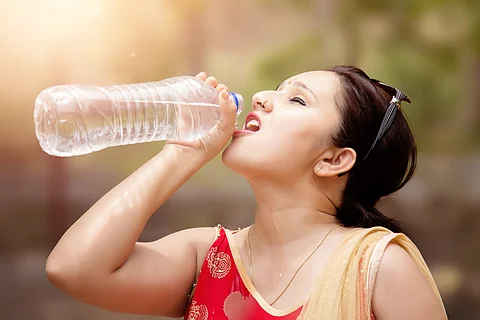

Climate change could shift the burden of temperature-related mortality from the older populations to younger ones, according to a new study.
Nearly 75 per cent of heat-related deaths occur among people under 35, who face the most extreme levels of humid heat. This finding contrasts with previous research, which suggested that both cold- and heat-related mortality impacts are concentrated among older individuals, noted the study, published in the journal Science Advances. The research was conducted in Mexico.
“We project, as the climate warms, heat-related deaths are going to go up and the young will suffer the most,” the study’s co-lead author, R Daniel Bressler, a PhD candidate in Columbia University’s Sustainable Development programme, in a statement.
The paper highlighted that there were key gaps in understanding how humid heat affects health across populations. Only nine papers have so far assessed the role of humid heat on mortality, according to the researchers.
To explore the relationship between humid heat and mortality in Mexico, the team examined wet-bulb temperature, which accounts for sweat evaporation — the primary way the human body cools itself. Under high humidity, sweating becomes less effective. When ambient wet-bulb temperatures exceed human skin temperature (around 35 degrees Celsius), the body can no longer dissipate heat into the environment, potentially leading to death if exposure is prolonged.
The researchers collected station-level wet-bulb temperature data alongside historical records of both mortality and temperature exposure in Mexico, which has tracked deaths, including age at death, since 1998.
The team analysed the relationship between age-specific mortality due to exposure and daily average wet- and dry-bulb temperatures.
Their findings, based on data from 1998 to 2019, showed that Mexico experienced about 3,300 heat-related deaths annually. Of these, nearly a third occurred among individuals aged 18 to 35. The study also emphasised that children under five, particularly infants, are highly vulnerable to heat. In contrast, people aged 50 to 70 were the least affected by heat-related mortality.
About 75 per cent of heat-related deaths and 87 per cent of heat-related lost life years occurred among those under 35, the researchers found.
People in their 70s experienced minimum mortality at temperatures nearly 10°C higher than those in their 20s for both dry-bulb and wet-bulb temperatures.
However, older people suffered the highest cold-related mortality rates. Ninety-eight per cent of deaths and 90 per cent of lost life years due to cold occurred among individuals over 35, with the majority among those over 70.
While younger adults are more physiologically capable of tolerating heat, several behavioural, social and economic factors put them at greater risk of heat-related mortality. For instance, younger people are more likely to be exposed to ambient heat through sports and recreational activities. Moreover, households with older heads are more likely to own air conditioning to combat heat.
Occupational exposure is also an important factor, as young adults are more likely than older individuals to work in outdoor occupations, increasing their vulnerability to heat.
“Given that temperature-related mortality is projected to be the largest single source of climate damages, the disproportionate burden of this impact on the young is likely an important source of future climate-driven inequality,” the paper read.
The findings from Mexico have implications for the wider world. The study noted that hotter and lower-income countries — which are expected to be the most adversely affected by climate change — have among the youngest populations in the world currently and over the coming century.
For example, they are concentrated in Africa, Central America, West Asia and portions of South and Southeast Asia, the study highlighted.